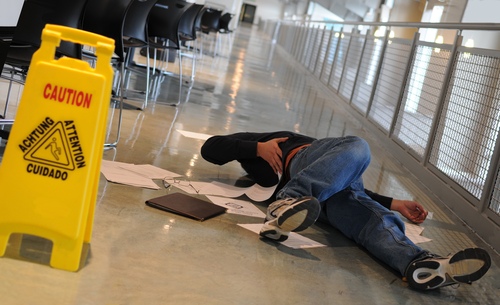
Throughout the years, our Tallahassee attorneys have handled numerous cases where a client has slipped on someone else’s property and gotten injured. Most of those clients just assumed that whoever was the owner of that property would be automatically responsible for their injuries. However, the fact is, several factors must be proven before a property owner can be held responsible for a slip and fall, and throughout the years, legislation and case law has made it harder and harder to succeed on these claims.
What Happens If I Slip and Fall At Someone Else’s Property?
When you enter someone else’s property as an invitee, the owner of that property has a non-delegable duty to maintain the property in a reasonably safe condition.
In addition, the property owner also has a non-delegable duty to correct or warn of known dangers that the owner knew or dangers the owner should have known about within the property: dangers that the invitee did not and/or should could not have known about through reasonable care. That means the property owner must take reasonable steps to ensure the property is free from any type of potential injury causing dangerous conditions.
If a property owner knows or should know about a dangerous condition, the property owner owes the invitee a duty to warn of the dangerous condition. Further, Florida Statute (Fla. Stat.) § 768.0755 requires the injured individual to prove the property owner had actual or constructive knowledge of the dangerous condition and should have acted to remedy it.
The statute then provides ways to prove constructive knowledge, such as proving:
- The dangerous condition existed for such a length of time that, in the exercise of ordinary care, the business establishment should have known of the condition; or
- The condition occurred with regularity and was therefore foreseeable.
As such, when an injured person brings a claim against a property owner as the result of a slip and fall, one of the first defenses you will hear is there was no notice to the owner of the dangerous condition. The best way to defeat that argument starts at the time of the fall itself. Immediately after the fall, always document what the spill looks like by taking pictures or making sure an accurate description of the spill goes in the incident report.
A Brief Case Study Example
Imagine you slip and fall at the local grocery store on what appears to be spilled water.
After collecting yourself and getting up, you realize the spill has several cart tracks and footprints in it and appears to have contain some nearly melted ice cubes in it. You get up and find an employee and report the fall. The employee immediately wipes up the spill without taking pictures and fills out a report simply stating you slipped and fell on a clear liquid.
After leaving the store you get examined at the emergency room and find out you fractured your wrist in the fall. When you make a claim against the store for the injury their risk manager quickly responds that they did not have notice of the spill. At this point, if you had pictures of the dirty liquid with footprints in it you would be able to argue there is evidence the spill had been there for a long enough period the store should have known about it. Without the pictures, you are left with just your testimony, which is not as strong as pictures or an incident report written by a store employee.
The moral of the story is–if you cannot prove actual or constructive notice of the dangerous condition, you don’t have a case. Therefore, after a fall, make every effort possible to document all the characteristics of the spill, preferably with photographs. By doing so your chances of prevailing on the case will be drastically increased.
Need Legal Assistance?
If you or a loved one have been injured as the result of a slip and fall accident, call the attorneys at Nonni Homola today by dialing 850-601-1111 or fill out our Free Consultation form!


